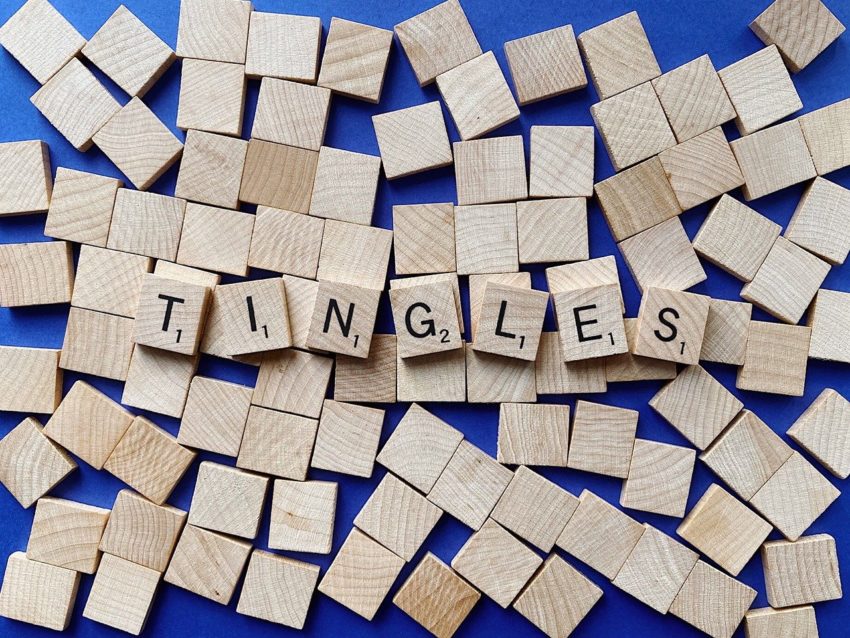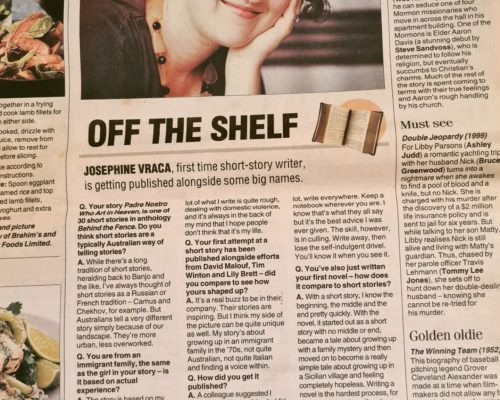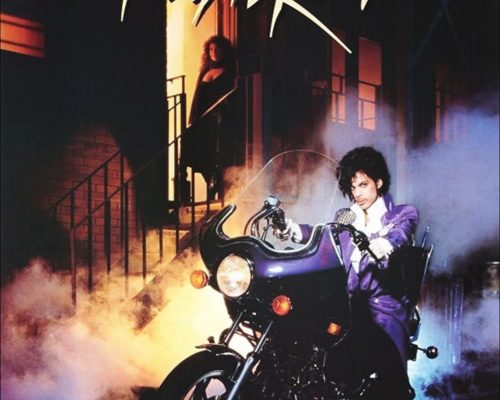I have a treat for you today.
This episode isn’t just about one word, but a series of words that have been strung together and have created a movement, a cultural phenomenon called ASMR.
Many years ago, I found a series of videos on youtube of people making miniature food. Actual food like a burger, the size of a coin, sushi no bigger than a pebble. To make this food, faceless people use working miniature kitchens and utensils to prepare and cook the meals. It’s food for Barbie and Ken. And this food is edible.
Who are these faceless chefs? And why do they do spend hours making meals that won’t touch the sides of your stomach? More importantly, why do I watch them, over and over. Magnetised. Mesmerised. Tingles down my spine. An idiotic smile stretched across my face.
I’m not a youtube video watcher. Or any video or even voice tag. I don’t watch facebook lives or Instagram Stories and would rather read a video transcript than watch a how-to on youtube. And Toktok, well it’s simply my nightmare.
But those miniature food videos changed me. I have watched these videos for hours. Since then, I have watched kinetic sand and, my favourite, soap cutting videos, hair brushing with sounds on, my least favourite, eating and slurping videos.
All of this falls under the umbrella – Autonomous sensory meridian response or ASMR for short.
Chances are, even if you haven’t gone out of your way to watch or listen to ASMR, you have experienced it without even realising.
It’s the whisperings by Amelie in the classic French movie, and when she plunges her hands into sacks of dry beans at the market. It’s Diane Weiss applying makeup to Edward Scissorhands, gentle brushing and stroking. It’s the silent rustle of linen and silk fabric and of charcoal pencil against canvas in Portrait of a Lady on Fire. And it’s Bob Ross in The Joy of Painting – everything – the brush strokes, his soothing voice, his concentration.
Back at the start, there was no collective name for any of this. We just knew it was a bit special. Today we call it ASMR and it’s a cultural phenomenon, as its Wikipedia entry claims.
But what exactly is ASMR?
ASMR is short for Autonomous Sensory Meridian Response
- Autonomous – spontaneous, with or without control
- Sensory – about the senses or sensation
- Meridian – meaning a peak, climax, or point of highest development
- Response – referring to the experience that is triggered – the tingles for example
Does that clarify anything? No? Not for me either.
In everyday lingo, it is that it is a sight or sound or both that affects the senses to create a pleasant response. And that pleasant response can vary from:
- Tingling on the skin and scalp
- Slowing of the pulse
- Goosebumps and chills
- Euphoria
- Calm & relaxation
- Deep Sleep
According to the first peer-reviewed research on ASMR in 2015 called “Autonomous Sensory Meridian Response (ASMR): a flow-like mental state”:
“ASMR can be defined as a combination of positive feelings, relaxation and a distinct, static-like tingling sensation on the skin.”
The study found that common triggers, those are the sights or sounds that create the sensations, include whispering, personal attention, crisp sounds and slow movements.
More specifically:
- Repetitive movements like watching someone paint or make food
- Whispering and soft voices
- Crisp sounds such as tapping and paper crinkling
- People eating food – this is known as Mukbang
- Having your head massaged or shampooed
- Drawing with your finger on the palm of your hand or inner elbow
- Detailed, closeup sounds like the rustling of a beard
- The sound of Lego clicks
- The sound of bath bubbles popping en mass
- Hair brushing
Here’s a link to the study: https://peerj.com/articles/851/
Given that these responses to triggers have been happening forever without us realising it, you might think that ASMR has a long history. Sure, but we didn’t have a name for it, because we didn’t know it was actually, well, a thing, so we never really put it into words.
But then, in 2007, someone did.
On October 19, 2007, a user on the forum pages of steadyhealth.com with the handle “okaywhatever” made a post that garnered over 300 thousand replies – a lot of people felt it. The title of the thread? “Weird sensation feels good” and this thread contributed to the birth of what we now know to be ASMR.
In the original post, “okaywhatever” said:
“I get this sensation sometimes. There’s no real trigger for it. It just happens randomly. It’s been happening since I was a kid and I’m 21 now. Some examples of what it seems has caused it to happen before are as a child while watching a puppet show and when I was being read a story to or as a teenager when a friend drew on the palm of my hand with markers.”
Others soon added: “It’s like a tingling in my scalp”, a “head orgasm”, “weird head sensation”, a “brain-gasm”.
Soon, a name was suggested – Attention Induced Head Orgasm – AIHO.
The name was soon changed because people thought it sounded a bit fetishy, which it really isn’t.
One of the people on the original thread was Jennifer Allen, she wanted a better way to describe what she felt, and in 2010 she went on to propose a new name for the sensation – Autonomous sensory meridian response – ASMR.
So we know what it is, what the triggers are, what it’s called. But why is it pleasurable? Is there science behind it? And even if there isn’t, do we care if it feels good?
It’s suggested that around 20% of us respond to ASMR triggers. Honestly, I would imagine it to be more, and I’m sure as we research the phenomenon further, that number will grow as people come to understand it.
In 2015, the Swansea University in Wales conducted a survey of around 500 ASMR enthusiasts that revealed 75% of its subjects experienced ASMR sensations from whispering sounds. In fact, whispering is the most common trigger for ASMR.
During ASMR, the brain releases endorphins and oxytocin, which induce relaxation. The brain interprets the sensations as positive attention.
Through MRIs, one study, although small, found that the brains of people who reported experiencing ASMR seem to fire differently. The areas of the brain that relate to reward and emotional arousal showed increased activity.
According to Craig Richard, the author of “Brain Tingles”, “watching ASMR videos may activate your brain in a similar way as being with someone you care about while they play with your hair in a gentle way. It is likely that the brain chemical, oxytocin, is strongly involved in ASMR because it is known to cause relaxation during bonding and grooming behaviors.”
You know, like when monkeys pick each other’s fleas. Or, in my case, when I’m getting foils in my hair. That tingling sensation you feel along the back of your neck, the scalp, the legs is called Paresthesia.
According to Wedmd, Paresthesia is the pins and needles you feel when you’ve kept your legs crossed a long time.
It’s the numbness or a burning feeling in the extremities, such as the hands, arms, legs, or feet and is generally unpleasant. So why do ASMR enthusiasts love it?
It’s hard to say because there isn’t enough research yet. But what’s suggested is that those who experience ASMR score higher on the personality trait of “openness to experience” – they’re more imaginative, curious, and appreciate art, music and beauty.
According to Scientific American, Scientists who researched brain activity during ASMR found that the brain’s medial prefrontal cortex was activated in those who had experiences from triggers, and that’s just a fancy way of saying that the part of the brain that is considered evolutionarily advanced because it’s associated with self-awareness and social behaviours is activated. They also suggest that ASMR quote “mimics the pleasures of social engagement and bonding”.
https://www.scientificamerican.com/article/is-asmr-real-or-just-a-pseudoscience/
I am a very sensory person. I don’t necessarily get the ASMR tingles, but I do get the calm, the meditation without the actual meditation, which I can’t stand. I, quite literally, go into a trance-like state.
Since the original discussion in that health forum in 2007, ASMR went from something that nobody really talked about, to being the third most popular search term on youtube.
If you head over to Instagram, you’ll see there are over 12 million posts using the hastag ASMR.
So I hopped over to Google Trends – yes, Google Trends is a real website that analyses search queries in Google Search across various regions and languages. I decided to do a comparison of youtube keyword searches from 2008 til today for the words: ASMR, chocolate and porn.
Let me tell you that ASMR is outstripping porn.
The numbers I’m going to read out represent the popularity of the term in comparison to every other term searched on Youtube during the same time. A value of 100 is the peak popularity of the term, while a value of 50 means that the term is half as popular.
So in January of 2008, ASMR was 0, chocolate was 25, and porn was 100. That means that porn was one of the most popular search terms on Youtube.
In January 2022, chocolate is 16, porn is 12 and ASMR is 87. And this shift really started happening in August 2017.
What happened to cause the spike?
It’s hard to say. In 2016 Tastemade, an American-based digital food and lifestyle network, created an ASMR salmon carpaccio video, which features a close up of hands slicing, chopping, stirring and grinding. Within a year it was watched more than 4.4 million times on their Facebook page.
But the ASMR videos started well before that.
The first ASMRtist – that’s a person who creates ASMR – was Maria Viktorovna, whose Youtube channel, Gentle Whispering ASMR, has 2.14 million subscribers.
Originally from Russia and now living in the States, Maria released her first ASMR YouTube video in June 2011, titled “Whispering in English and Russian and flipping through a magazine”.
In 2017, hers was the first ASMR Youtube channel to reach 1 million subscribers. Maria’s work has been sampled by Canadian musician Deadmau5, she has appeared on Good Morning America and The Today Show, she has merch. She used to work for a medical company and now is a full time Youtuber with a net worth of around US$2 million.
Personally, I enjoy Gibi (GHIBI). She’s a whisperer with 3.95 million subscribers, and an affiliate’s dream. She whispers her way through Hello Fresh recipes and vacuum demonstrations. Gibi launched her channel in 2016 and it’s suggested that she has earned more than 7 million dollars from her ASMR videos. Since 2016.
Some of her videos include:
- Job advice
- Deep ear attention
- And
- Brushy Brushy Brushy
Gibi is known for her roleplay videos from medical examinations to Harry Potter roleplays, she uses characters from real life, from movies and from the gaming world to whisper engaging stories.
Here’s Gibi at a Hogwarts sorting ceremony.
The number one ASMRtist on YouTube is 39 year old Thai-Canadian ex bartender SAS ASMR with 9.3 million subscribers and over 1300 videos. She launched her YouTube channel in April 2016 and uploaded her first video, ‘ASMR Sushi Dynamite Roll Mukbang,’ in November of the same year. Some of her playlists include:
- ASMR Ramen Noodles
- Soft whispers
- Colourful food party
SAS ASMR’s videos have been watched more than 1 billion times. That’s Billion with a B. The estimated revenue from her ASMR videos is somewhere north of 5.5 million dollars.
There’s another type of ASMR that combines the sounds with video and personal attention. It’s a side of ASMR I don’t quite get. It involves role play – not the sexual kind, but, for example, Beauty Salon ASMR.
The camera is up close to the ASMRtist’s face, and it looks like you are in the video, she is performing the therapy on you. She offers a tea before the service, whispering, gently tapping on the cup, sudsing the hair, massaging in the shampoo with bubbles popping while the artist describes her movements.
It reminds me of what happened to me in China a few years ago, and it involved public ear cleaning.
Jeff and I were in Chengdu at an outdoor cafe, a huge one in a park, where a couple of men clean out your ears, while people eat and drink their tea, people walking past. You know how at the carwash you can get different levels of clean? With wheel wax. Without. With buffing. A dry. Or not. Well I saw those old men and I went in with “give me the lot.” I didn’t even care if random strangers took my photo, a video. I was all in. And I was not disappointed.
This is up close and real life personal attention ASMR.
Maybe you feel it when you clean your own ears.
Over on Reddit you will find a number of ASMR communities, and the biggest, created in February 2011, boasts around 246000.
As I’ve said, ASMR can be audio, visual or both. So I posted a poll on Reddit asking if people prefer audio, video, or both at once, and the results from a quick 3 day survey with a total of 393 votes were:
- 13 respond to video only
- 67 respond to audio only
- 313 respond to both video and audio – so that’s watching someone perform a task with sound.
https://www.reddit.com/r/asmr/comments/sbd6mt/question_do_you_prefer_asmr_audio_video_or_both/
Of course, on Youtube you’ll find a combination of videos that appeal to both auditory and visual senses. In many of these videos, no one speaks. You often don’t even see people, just hands, like in the mini food videos. But sometimes people do speak, really close to the microphone, every lip smack, gulp, slurp, teeth licking moment. And this is the type of ASMR that has taken the world by storm and made some people very very rich.
Search your music app and you will find a tonne of audio ASMR – sleep triggers like finger running gently over the bristles of a plastic brush, humming, and whispered bedtime stories.
What all ASMR has in common is the repetition of mundane acts. In my miniature food videos, every single step is performed, slowly and meticulously. Onions and tomatoes are chopped with painstaking precision with a tiny knife, small pieces of fresh salmon are marinated and then fried on teensy tiny stoves with tealight candles under the hobbs that create the flame for the teensy tiny frying pan. It’s all very gentle. No sudden movements.
I liken ASMR to the those magic eye pictures in the papers that we concentrated on in the 90s. That’s the 1990s kids. With magic eye, you either see them or you don’t. But the less you concentrate, the better. When you stop trying, that’s when the magic happens.
Here’s the thing though, as much as I love ASMR, I do wonder if there is the potential for abuse through subliminal messaging?
It’s hard to know because society has changed so much in the past 20 years or so since the internet and advertising on social media have become ubiquitous.
What we used to see as selling out – you know, making money through product placements and the like – is not as big a deal anymore, especially if you’ve grown up with it your whole life.
In ASMR you might see the guy in the forest cooking on a camp fire and using a knife, brand forward – is he sponsored by the knife maker?
And just like Gibi reeling off a Hello Fresh recipe in an effort to sell the brand’s food subscription, will ASMR whispers lead us to join a cult or kill someone, or buy a particular brand of makeup or beer?
I doubt that it will get that crazy. So far nobody has used ASMR as a criminal defense – so far.
But what is definite is that the popularity of ASMR is global. That video of someone making mac and cheese has ads by Dior. DIOR!
ASMR searches went up when the pandemic hit – as we turned inward and stayed home, we searched for relaxation. And ASMR is like meditation without the painful floor sitting. It’s for those of us who simply cannot focus for more than a minute and would rather drown in a bathtub than try meditation. This is for those of us who simply cannot clear our thoughts.
So what about you? Have you watched or listened to any ASMR?
I’ve also created a compilation of ASMR triggers on my youtube channel that you can watch while listening to the episode.
PPS. Not everyone experiences it, and some will experience it negatively, and that is called misophonia, which means “hatred of sound”.
Join me on Instagram: http://www.instagram.com/saywhatthepodcast
Please share and leave us a review on your favourite podcast app including Apple and Spotify – it makes it easier for others to find the show.
Or find your favourite listening app HERE
Sound engineering and original music by Jeff Willis. You can find his tunes on Spotify and iTunes


